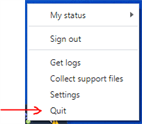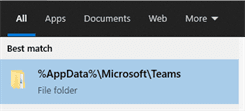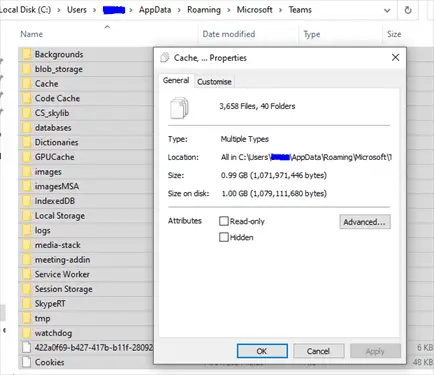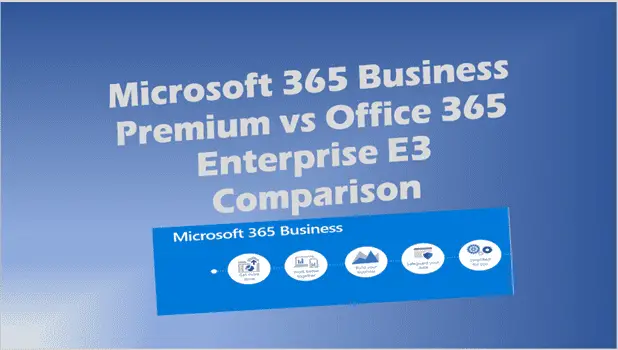Microsoft Teams slow
Is your Microsoft Teams slowing today? or does it seem like Microsoft Teams slowing down computer?
Try the following suggestions in the order suggested.
- Clear the MS Teams Desktop client Cache.
- Configure Microsoft Teams Settings – Disable GPU hardware acceleration & Register Teams as the Chat app for Office.
- Change Microsoft Outlook Options Settings to disable Microsoft Teams meeting add-in.
To use Teams, you need a Microsoft 365 account with a Business or Enterprise Microsoft 365 license plan.
Microsoft Teams slow today
If you find that your Microsoft Teams is slow today,
- First take a look at the Microsoft 365 Service Health Status and if no issues are reported then
- Second if you’re using the Desktop MS Teams client, Exit desktop teams client and use Web Teams Client.
Microsoft Teams slow today – Check Microsoft 365 or Office 365 Service Status.
1. Check via Twitter:
Click Here to see Status via Twitter
2. Check Service Issues affecting tenant admins via Official Microsoft 365 page:
Click Here to see Service health via Office 365 page
3. Check Current Service Status via Portal Office page:
Click Here to see Current Status via Portal Office page.
Microsoft Teams slow today – Use the Web Client version of Teams.
- Quit the Desktop Teams App
- In the system tray, Right Click the Teams icon and select Quit to exit.
- Go to Teams on the web https://teams.microsoft.com/
- Login with your username and password.
- If Teams works OK in the web Teams client, then focus on the components associated with Desktop MS Teams on your local PC.
Microsoft Teams slowing down computer
IF you’ve Microsoft Teams desktop client app installed and you start to notice the following happening:
- Your local Microsoft Outlook takes a long time to open.
- And when it does open, you keep getting Outlook not responding messages.
- Frequent Hard Disc activity when you haven’t launched a program.
Then it could be Microsoft Teams slowing down your PC. What I do to resolve this problem is clear Microsoft Teams client app cache – folders and files.


The process of clearing Microsoft Teams Desktop client cache is as follows:
- Quit the Desktop Teams App
- In the system tray Right-Click the Teams icon and select Quit to exit.
- Type ” %AppData%\Microsoft\Teams ” in the Windows Search Field.
- Open the Best Match File folder.
- Press ” CTRL + A ” to select all folders and files
- If you want to make a backup copy all selected folders and files –
- Type ” CTRL C ” to copy all selected folders and files.
- Make a New Folder somewhere on your C Drive or USB drive.
- Type ” CTRL V ” to paste all copied folders and files into the New Folder.
- Now you’ve a backup if you want to restore.
- Delete all selected files and folders from the %AppData%\Microsoft\Teams folder.
- Restart your PC.
- And notice how much your PC has improved in responsiveness.

does Microsoft Teams slow down computer?
Some people have experienced computer slow down after installing and using Teams desktop client. Yes, Teams does use a lot of memory if you check via task manager, it will confirm this.
What I have found is my PC significantly improved its responsiveness after clearing appdata Teams cache. How to do this is described well in this article.
Microsoft Teams slow to load
If you’re experiencing these:
- Microsoft Teams slow to load.
- Microsoft Teams slow to open.
- Microsoft Teams slow response.
and you use Microsoft Teams desktop client, try Microsoft Teams cache.
Clear the MS Teams Desktop client Cache
- Quit the Desktop Teams App
- In the system tray Right-Click the Teams icon and select Quit to exit.
- Type ” %AppData%\Microsoft\Teams ” in the Windows Search Field.
- Open the Best Match File folder.
- Press ” CTRL + A ” to select all folders and files.
- If you want to make a backup copy all selected folders and files –
- Type ” CTRL C ” to copy all selected folders and files.
- Make a New Folder somewhere on your C Drive or USB drive.
- Type ” CTRL V ” to paste all copied folders and files into the New Folder.
- Now you’ve a backup if you want to restore.
- Delete all selected files and folders from the %AppData%\Microsoft\Teams folder.
- Restart your PC.
- And notice how much your PC has improved in quick loading.
To use Teams, you need a Microsoft 365 account with a Business or Enterprise Microsoft 365 license plan.
Related Posts: How to improve MS Teams performance on Windows PC?






